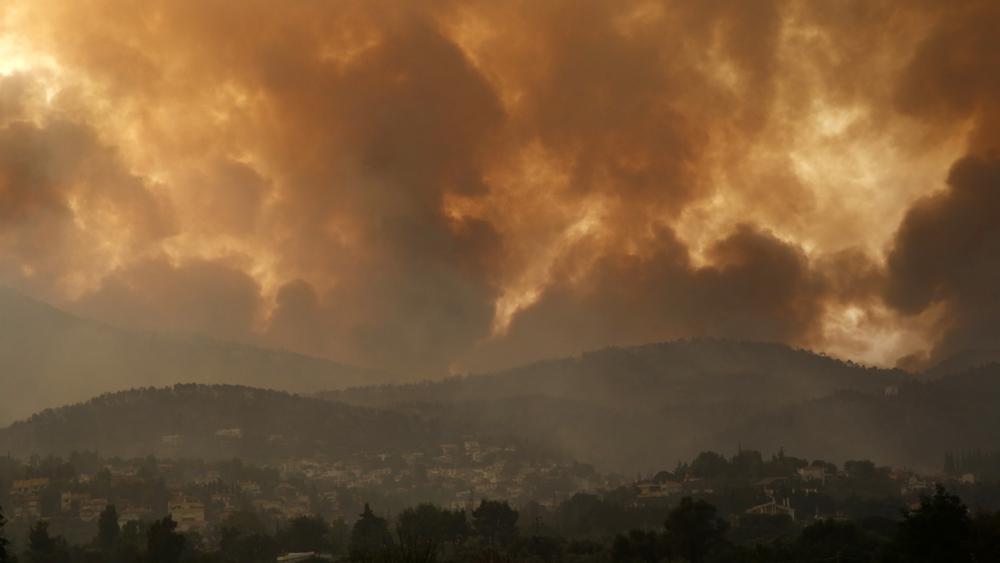The climate of the Earth is getting so hot that temperatures in about a decade will probably blow past a level of warming that world leaders have sought to prevent, according to a report released on Monday that the United Nations calls a “code red for humanity.”
“It’s just guaranteed that it’s going to get worse,” said report co-author Linda Mearns, a senior climate scientist at the U.S. National Center for Atmospheric Research. “I don’t see any area that is safe … Nowhere to run, nowhere to hide.”
Advertisement
But scientists also eased back a bit on the likelihood of the absolute worst climate catastrophes.
The authoritative Intergovernmental Panel on Climate Change report, which calls climate change clearly human-caused and “unequivocal,” makes more precise and warmer forecasts for the 21st century than it did last time it was issued in 2013.
Each of five scenarios for the future, based on how much carbon emissions are cut, passes the more stringent of two thresholds set in the 2015 Paris Climate Agreement. World leaders agreed then to try to limit warming to 1.5 degrees Celsius (2.7 degrees Fahrenheit) since the late 19th century because problems mount quickly after that. The limit is only a few tenths of a degree hotter than now because the world has already warmed nearly 1.1 degrees Celsius (2 degrees Fahrenheit) in the past century and a half.
Under each scenario, the report said, the world will cross the 1.5 degrees Celsius warming mark in the 2030s, earlier than some past predictions. Warming has ramped up in recent years, data shows.
In three scenarios, the world will also likely exceed 2 degrees Celsius (3.6 degrees Fahrenheit) over pre-industrial times — the other, less stringent Paris goal — with far worse heat waves, droughts, and flood-inducing downpours “unless deep reductions in carbon dioxide and other greenhouse gas emissions occur in the coming decades,” the report said.
“This report tells us that recent changes in the climate are widespread, rapid and intensifying, unprecedented in thousands of years,” said IPCC Vice-Chair Ko Barrett, senior climate adviser for the U.S. National Oceanic and Atmospheric Administration. “The changes we experience will increase with further warming.”
The 3,000-plus-page report from 234 scientists said warming is already accelerating sea-level rise, shrinking ice, and worsening extremes such as heatwaves, droughts, floods, and storms. Tropical cyclones are getting stronger and wetter, while Arctic sea ice is dwindling in the summer and permafrost is thawing. All of these trends will get worse, the report said.
For example, the kind of heat wave that used to happen only once every 50 years now happens once a decade, and if the world warms another degree Celsius (1.8 degrees Fahrenheit), it will happen twice every seven years, the report said.
As the planet warms, places will get hit more not just by extreme weather but by multiple climate disasters that occur simultaneously, the report said. That’s like what’s now happening in the western US, where heat waves, drought, and wildfires compound the damage, Mearns said.
Some harm from climate change — dwindling ice sheets, rising sea levels, and changes in the oceans as they lose oxygen and become more acidic — are “irreversible for centuries to millennia,” the report said.
The world is “locked-in” to 15 to 30 centimeters (6 to 12 inches) of sea-level rise by mid-century, said report co-author Bob Kopp of Rutgers University.
Nearly all of the warming that has happened on Earth can be blamed on emissions of heat-trapping gases such as carbon dioxide and methane. At most, natural forces like the sun or simple randomness can explain one- or two-tenths of a degree of warming, the report said.
The report described five different future scenarios based on how much the world reduces carbon emissions. They are: a future with incredibly large and quick pollution cuts; another with intense pollution cuts but not quite as massive; a scenario with moderate emissions; a fourth scenario where current plans to make small pollution reductions continue; and a fifth possible future involving continued increases in carbon pollution.
(With AP inputs)











